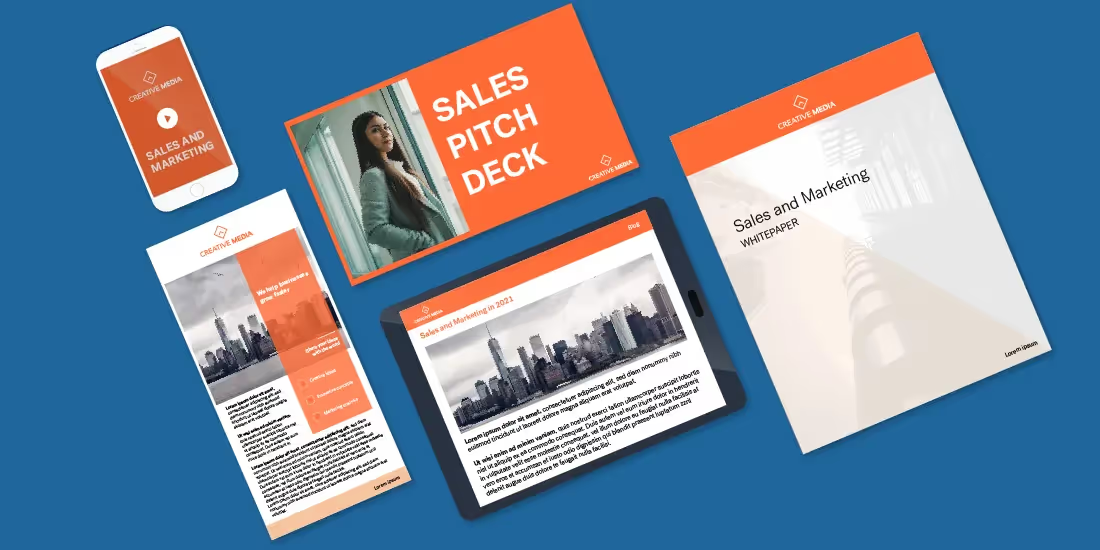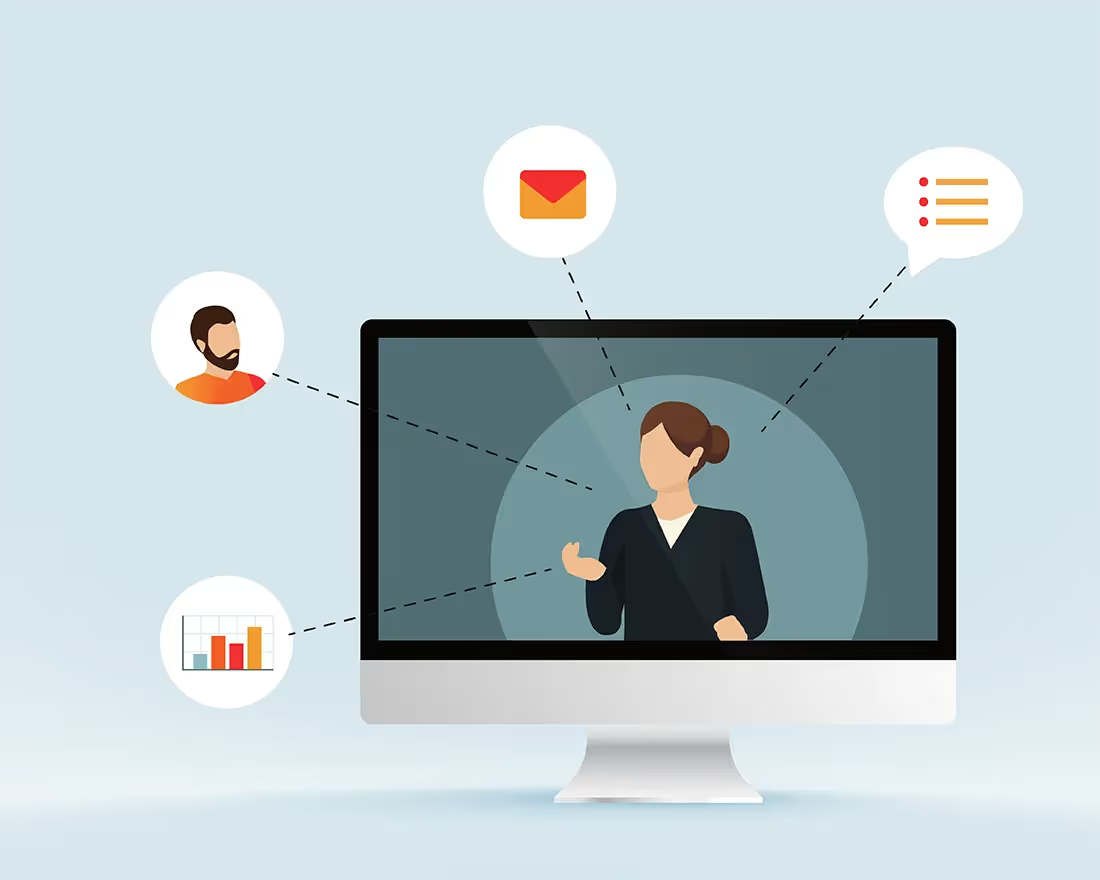
Sales collateral materials are anything that helps propel new prospects through the sales funnel. Essentially, it’s branded sales assets— or content— designed to reach specific client personas. Many teams will use sales collateral without even realizing it as a part of sales enablement. Creating and providing your sales representatives with the right tools is a good start to convert leads to new customers.
Sales collateral is to a sales rep what an advertisement is to the marketing team. It’s an asset to help drive conversion. While you might assume that the sales team repurposes marketing materials, a shocking 80% of marketing content is rarely or never used by sales departments. That means a lot of sales teams are likely cobbling together their own content, or they’re creating a marketing bottleneck by adding more tasks to the creative team’s to-do list. To streamline the process, teams should evaluate sales collateral needs and marketing assets to see where there are overlaps and what can be recycled.
The first step to creating a more efficient process is identifying what your sales collateral materials gap is. Who are you selling to and how can your sales content help educate and sell them on your offering? Start there, and then work on creating some killer, branded content.
Here are 7 examples of great sales collateral, and best practices for each.
Presentations & sales decks
Presentations are perhaps the most obvious piece of sales collateral with various use cases. Sales proposals and decks are a big part of any sales strategy. Sale proposals are used to demonstrate how your business, brand, service or product will positively influence a buyer, partner company, or investor. You might also use a presentation to onboard new clients to get them up to speed on your service or product once they have signed up.
Beautiful.ai makes presentations easy for sales teams to create effective sales collateral. Gone are the days of endless marketing bottlenecks. With Beautiful.ai’s pre-built slide and presentation templates sales teams can create their own decks without the need for professional designers to create, finesse, or redo their slides.
White papers
A white paper is long-form content used to educate and inform potential customers about your product, service, or ideas. Your white papers should be informative, and persuasive, to entice any leads to take action. Different from a blog post, white papers are long one-page, in depth guides that might include reports, infographics, solutions, and quantifiable data or statistics. White papers are usually downloadable PDF files that can be sent out or downloaded as needed.
Case studies
Your case studies are your social proof. They act as evidence that individuals and businesses alike have used and love your offering. In other words, they build your credibility. Including case studies are a great way to show leads how other clients have leveraged your product or service to contribute to their own success. Your case studies might include pain points, use cases, solutions, and wins.
You can easily include case studies, and testimonials, in your sales presentations with Beautiful.ai’s quotation or team slide.
Email templates & sales scripts
Consistency is the backbone of any sales team. A study shows that 60% of customers say no four times before eventually saying yes. In order to earn that coveted “yes”, frequency is your secret sauce. In fact, 80% of sales transactions require five follow-up calls or emails before closing a deal. Templatizing your emails and sales scripts can help make this process much more efficient, while keeping your content on-brand with your company’s voice and tone.
Blog posts
Blog posts are an indirect way to create lead generation, and as such are an example of great sales collateral. By targeting keywords and optimizing for search, you’re opening your company’s website to new leads. Your blog posts should be informative, and answer industry questions that prospective clients may be seeking answers for. Your sales team might also choose to send links to the company’s blog to provide more context, information, or product updates to the client.
Demo videos
It’s very likely that your prospects will want to see your product or offering in action before pulling the trigger. Demonstration videos are a great tool to have in your sales toolbox. Walking your audience through a demo can help them understand how your offering will solve their pain points and the different ways they can leverage your product or service. A live demo also gives your prospects a chance to ask questions in real-time.
Pro tip: include any demo videos in your sales presentation by selecting Beautiful.ai’s video slide and uploading the file from your computer.
Brochures
A brochure can be used in two ways, 1) to introduce your brand and your offerings, or 2) to close the deal and list out pricing packages. Whichever way you choose to use a brochure— or infographic— make sure it is on brand and consistent with all of your other sales collateral materials. Brochures can live on your website, be sent via email, or handed out to interested parties at events or on-site meetings.







